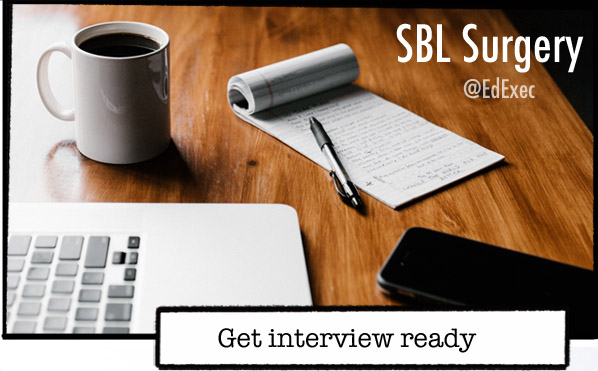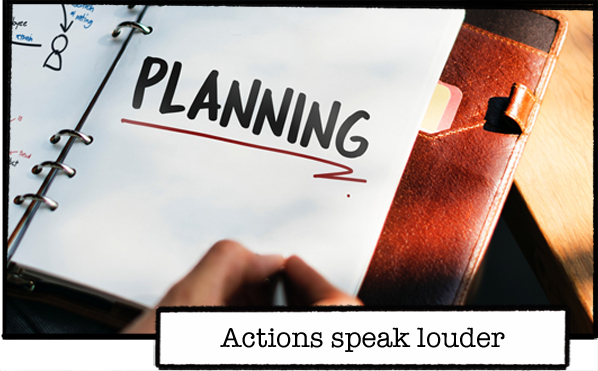I’ve tried everything I can to make it work at my current school but it’s just not happening. I love the SBM role but I go into work every day feeling terrible. It’s got to the point that I know I need to move on. I’m ready to apply for new jobs but it’s been so long since I wrote an application and had an interview that I’m really nervous about the whole process. Where do I start?
First of all, congratulations on making such a brave decision. If you are unhappy where you are and you know that there’s no prospect of change, then choosing your own happiness and wellbeing will always be the right decision. If I could insert a GIF here, it would be the high five between Maverick and Goose in Top Gun!
Ok, now for some tips to get you application savvy and interview ready.
Do your research
Read the advert, job description and person specification thoroughly. Be clear on pay scales, terms and conditions, reporting lines and responsibilities. An indicator of the value a school puts on the SBM role is the salary so read the small print carefully. Also, check whether the role will be part of the SLT. Your research shouldn’t stop here though.
Look at the website, Ofsted report, performance tables, governance documentation/minutes etc. and Google the organisation and its leader to see what comes up. All of this information will help you decide if you should apply and if you do, be useful to frame your application around.
But, whatever you do, don’t panic yourself into applying for a job in a school that you have doubts about. You owe it to yourself to be picky!
Arrange a visit
Do this before you submit your application as if you do decide to apply, you’ll have even more information to make use of. You will learn a lot from meeting the staff and seeing the school in action. These observations will tell you straight away as to whether this is a place you’d like to work and if you could see yourself working within the team.
Also, a visit is a good way to test out the commute. If it’s too far to go for a visit or an interview, then it’s too far to travel every day. Don’t try and talk yourself into a role with a tricky commute – you will regret it!
Structure your personal statement
Beyond the qualifications, training and safeguarding elements of an application form, recruiters pay the most attention to the personal statement. This is how they’ll determine if you meet the person specification.
Map out the criteria and write a list of bullet points that evidence your experience for each to make sure you don’t miss anything. Flesh it out into a narrative and read it aloud to yourself to make sure it flows. Remember to not just write about what you’ve done but what impact you’ve had. Be as specific as you can!
If you feel comfortable, ask someone you trust to read it over for you to give you some feedback. The aim here is to leave no doubt in their minds that you are not only qualified and experienced but are also capable of doing the job they need you to do.
Make a good impression
Even if you’ve been for a visit beforehand, the interview day is a different kettle of fish. Be dressed appropriately, keep your body language open, make eye contact, smile and project a positive energy.
Ok, that last bit sounds a little woo-woo but you know yourself, you can tell the difference between someone who wants to be there and someone who doesn’t. Nervous behaviours can sometimes send mixed signals so try and be as relaxed as you can.
You won’t be judged for being nervous but they’ll want to see that beyond that, you’re friendly, genuinely interested in the job and actually glad to be there.
Don’t get complacent
You will be being watched for every minute beyond the 45 minutes you’re actually sat in front of the panel so keep your game face on at all times. Every member of staff you come across is an ‘interviewer’ of sorts so how you treat them is as important as how you treat the formal panel.
How you behave throughout the day will be fed back so you want to show that you are consistent in terms of attitude and how you present. Though these things aren’t covered in the job description and are hard to measure, people will remember how you make them feel. Make them feel good!
If it comes down to two candidates, they will likely pick the person who is the ‘best fit’.
One last thing…
Don’t forget that you’re interviewing them too. If you show up for an interview and you’re greeted by someone who doesn’t make you feel welcome, if staff are rude to you or if the day is completely chaotic, this will tell you a lot about how the organisation operates and will give you an insight about what it would be like to work there. Again, issues crop up – printers don’t work, a panel member might have been replaced at the last minute or a meeting room might have been double-booked. Watch how they handle it and you will learn a lot about them too.
If it doesn’t feel right then it probably isn’t. Don’t be afraid to say no and don’t be tempted to say yes out of panic. Trust your gut, it will rarely guide you wrong.
And if you know you did everything right and they didn’t choose you for the role, that’s okay. It simply means that someone else was a better fit, not that you weren’t a great candidate.
Remember what you’re worth, remember you deserve the best and don’t settle for anything less.
Like what you’ve read? Subscribe to this blog by clicking here.
P.S. Have you joined The Business of School Leadership Facebook Group yet? For practical support, advice, tips, tools & guidance about all things school leadership, join us in the community by clicking here.
Written for: Education Executive Magazine (@edexec)




